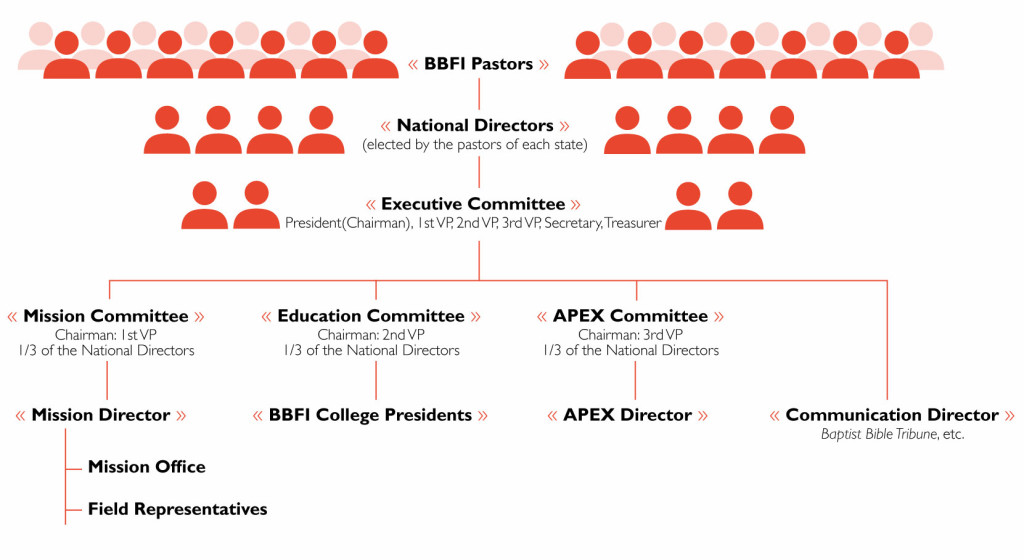by Randy Harp
The concept of “fellowship” comes from the New Testament. Koinonia is the word most often translated “fellowship” and has to do with commonality — things held in common such as purpose and goals. The root to koinonia is often translated as partner. When Paul thanked the Philippians in chapter one for their koinonia, he wasn’t thanking them for their good food and conversation, he was thanking them for their partnership in the work of the Gospel. The verb form of the same word is seen in Philippians 4:15 as Paul shared specifically how they partnered with him.
This was the idea behind the formation of the Baptist Bible Fellowship. When Church A supports Missionary X, the church and the missionary are in partnership, or fellowship. When Church A and Church B both support Missionary X, the two churches are now in fellowship. It is proper, in that context, to say the two churches and the missionary comprise a Fellowship. All involved have common goals and purposes with regard to the missionary’s work and support. If you allow that concept to expand so there are thousands of churches contributing to nearly a thousand missionaries, church planters, multiple colleges, and the Baptist Bible Tribune, you will have a good idea of how the Fellowship works in principle.
In the first bylaws of the BBFI (1950), the founders said the purpose of the Baptist Bible Fellowship was “To provide fellowship for Bible-believing Baptist churches in doctrine, evangelism, missions, and the training of youth for gospel service.” In other words, they saw organizing as a means to provide fellowship. Churches associating with one another for the common purpose of missions was taken for granted as a New Testament requirement, a means to an end. From there it was a matter of deciding what organizational nuts and bolts would be necessary to accomplish the job efficiently and yet maintain autonomy of the churches in fellowship with one another.
The present organizational structure differs somewhat from the original, but the goal is still the same: to provide fellowship, or a means of partnership. The executive officers are not the Fellowship. The national directors are not the Fellowship. The institutions — the Fellowship owned colleges, Mission Office, and Tribune — are not the Fellowship. These all merely help provide fellowship.
BBFI STRUCTURE PROVIDES FELLOWSHIP
In a corporate organizational chart, a main office or entity occupies the top place, and subsidiaries are placed underneath. When the same model is applied to religious denominational structure, churches are plainly under the control of entities higher up the chart, and the state fellowships are subsidiaries of the main entity at the top of the chart.
In the chart below you can see how the BBFI is structured. Admittedly, this structure is an organizational consultant’s worst nightmare, but it works for these four reasons:
1. Authority rests within the local churches and their pastors.
2. All elected executive officers (president, vice presidents, secretary, treasurer, and national directors) are pastors.
3. Every pastor has a representative voice from his state in the form of a national director.
4. The strength lies in the grassroots of the organization, the state fellowships.

HOW DECISIONS ARE MADE
Several safeguards are in place to ensure fairness and openness in business. Generally speaking, before policy changes, officer nominations, and other Fellowship business items are taken to the entire Fellowship at national meetings, the same matters are considered by the national directors. A simple majority decides, except in the case of constitutional amendments, which require a two-third’s majority for passage. Any BBFI pastor is permitted to audit meetings of the national directors and their committees.
State fellowships are entities to themselves and not subsidiary to the BBFI. Historically, the state fellowships have been primarily focused on church planting and providing encouraging fellowship meetings for local pastors. Each state selects their national director to represent their state to the BBFI. These elected national directors also report back to the pastors in their state key points of information in regard to the state of the Fellowship including its institutions (Mission Office, colleges, and the Tribune.)
HOW DOES ONE “JOIN” THE FELLOWSHIP?
Affiliation with the BBFI is open to any Baptist pastor of a supporting Baptist church believing in and adhering to the Word of God, on the basis of the Articles of Faith. A supporting Baptist church is a church that financially supports our missionaries or colleges.
FELLOWSHIP IS A MEANS
The structure of the BBFI is a like something someone said of democracy — it’s the worse system of government in the world … except for all the rest. It’s a fellowship, or a partnership, a way to get ministry done.
Noel Smith, about 18 months after the founding of the BBFI (December 21, 1951), wrote in the Tribune, “The people have faith and confidence in a constitutional Fellowship which they themselves created, which they control, and which is nothing more than a means through which they may work together to save as many souls as possible from being hurled into hell.”
Edited and updated from an article written by Keith Bassham in the January 2000 Tribune.
